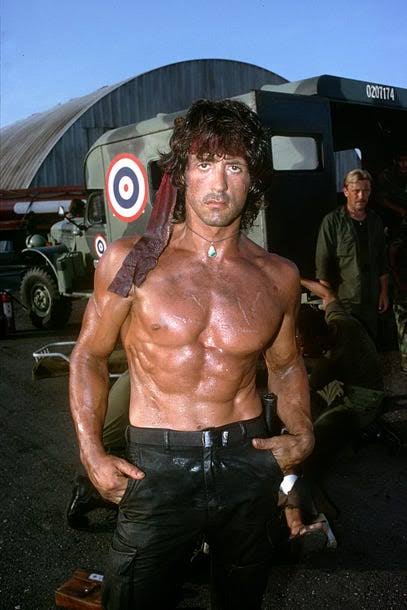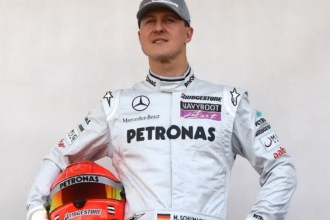Sylvester Stallone is no stranger to stories of perseverance. As the man behind one of cinema’s most iconic underdogs, *Rocky*, Stallone has repeatedly proven that his grit and passion for storytelling know no bounds. The *Rocky* franchise, which began with a film Stallone wrote in just a few days and starred in after refusing to sell the script unless he played the lead, remains a testament to his unyielding determination. Decades later, Stallone once again found himself in a position where he had to dig deep and draw from that same well of creativity and tenacity. The film that rekindled those old flames? *Rocky Balboa*, the 2006 continuation of the legendary boxer’s saga. For Stallone, making *Rocky Balboa* felt like writing *Rocky* all over again.
### The Long Road to *Rocky Balboa*
When *Rocky* hit theaters in 1976, no one could have predicted the cultural impact it would have. The film was an instant success, winning three Academy Awards, including Best Picture, and turning Stallone into a household name. Rocky’s journey from an unknown Philadelphia boxer to a world champion mirrored Stallone’s own rise to fame, and both the character and the actor became synonymous with perseverance and the underdog spirit.
As the years went by, the *Rocky* franchise continued to grow, with Stallone writing and starring in five sequels. However, the series began to lose its luster with *Rocky V* in 1990, which was met with mixed reviews and marked a downturn in both Stallone’s career and the franchise’s momentum. Many believed the story of Rocky Balboa was finished.
Yet Stallone wasn’t satisfied with how things ended. The franchise that had defined his career deserved a better send-off, and the character of Rocky had more to say. So, after years of reflection and facing his own struggles in Hollywood, Stallone decided to resurrect the Italian Stallion one last time. This decision led to the creation of *Rocky Balboa*, a film that would not only reinvigorate the franchise but also reconnect Stallone to the passion and drive that had propelled him to stardom in the first place.
### Crafting a Story of Legacy and Loss
In *Rocky Balboa*, we find the titular character in a very different place from his glory days. He’s long retired, running a small restaurant in Philadelphia, and grappling with the loss of his beloved wife, Adrian. His life has slowed down, but the fire within him—the need to fight, to prove himself—still burns. That fire is reignited when a computer simulation suggests that in his prime, Rocky could have beaten the current heavyweight champion, Mason “The Line” Dixon. This sets the stage for an improbable yet deeply emotional comeback as Rocky prepares to step into the ring one last time.
For Stallone, *Rocky Balboa* was not just about a boxer’s return to the ring; it was about revisiting the themes that had defined the original *Rocky*—hope, resilience, and the fight against the odds. In many ways, Rocky’s journey mirrored Stallone’s own life as an aging actor and filmmaker, looking for one last opportunity to prove himself in a rapidly changing industry. “It felt like writing *Rocky* all over again,” Stallone admitted, reflecting on the emotional investment he had in the project.
Just as he had with the first *Rocky* film, Stallone wrote and directed *Rocky Balboa* with a deep understanding of his character’s vulnerabilities and strengths. The movie wasn’t about reclaiming former glory or recreating past successes—it was about confronting the realities of aging, loss, and legacy. Much like Rocky, Stallone was facing his own battle, trying to remain relevant in a Hollywood that had moved on to younger stars and newer franchises. *Rocky Balboa* became his way of expressing those feelings of doubt, fear, and hope that still remained.
### Overcoming Doubts and Rejections
The road to getting *Rocky Balboa* made wasn’t easy. Just as Stallone had struggled to get the original *Rocky* greenlit, the idea of a sixth film in the franchise was met with skepticism. Studios were wary of reviving a character that many believed had run his course, and Stallone had to fight hard to convince executives that this story was worth telling.
But Stallone was determined. He believed in Rocky’s story and felt a deep connection to the character’s journey. In many interviews, Stallone has said that the making of *Rocky Balboa* was one of the most challenging experiences of his career, not just because of the physical demands of portraying an older boxer, but because of the emotional weight that the project carried.
Just like Rocky, who defied the odds and silenced his critics in the ring, Stallone overcame the hurdles that stood in his way. When *Rocky Balboa* was finally released in 2006, it was met with critical and commercial success. The film grossed over $150 million worldwide, and more importantly, it restored the franchise’s legacy, giving Rocky Balboa—and Stallone himself—a proper send-off.
### A Return to Form
For Stallone, *Rocky Balboa* wasn’t just another film in his career—it was a return to the creative process that had launched him to stardom. The film allowed him to reconnect with his roots as a storyteller, digging deep into the emotional core of a character who had come to represent so much more than just a boxer.
In many ways, making *Rocky Balboa* was cathartic for Stallone. It allowed him to address the realities of aging, the pain of loss, and the idea of legacy—all themes that he had been grappling with in his own life. And much like the original *Rocky*, the film was a reminder that no matter how many times life knocks you down, it’s the will to get back up that defines who you are.
Looking back on *Rocky Balboa*, Stallone often says that the experience felt like writing *Rocky* all over again. It was a chance to tell a deeply personal story, one that resonated not just with audiences, but with Stallone himself. And just like Rocky Balboa, who found the strength for one final fight, Stallone proved that even after decades in the industry, he still had the heart of a fighter.





